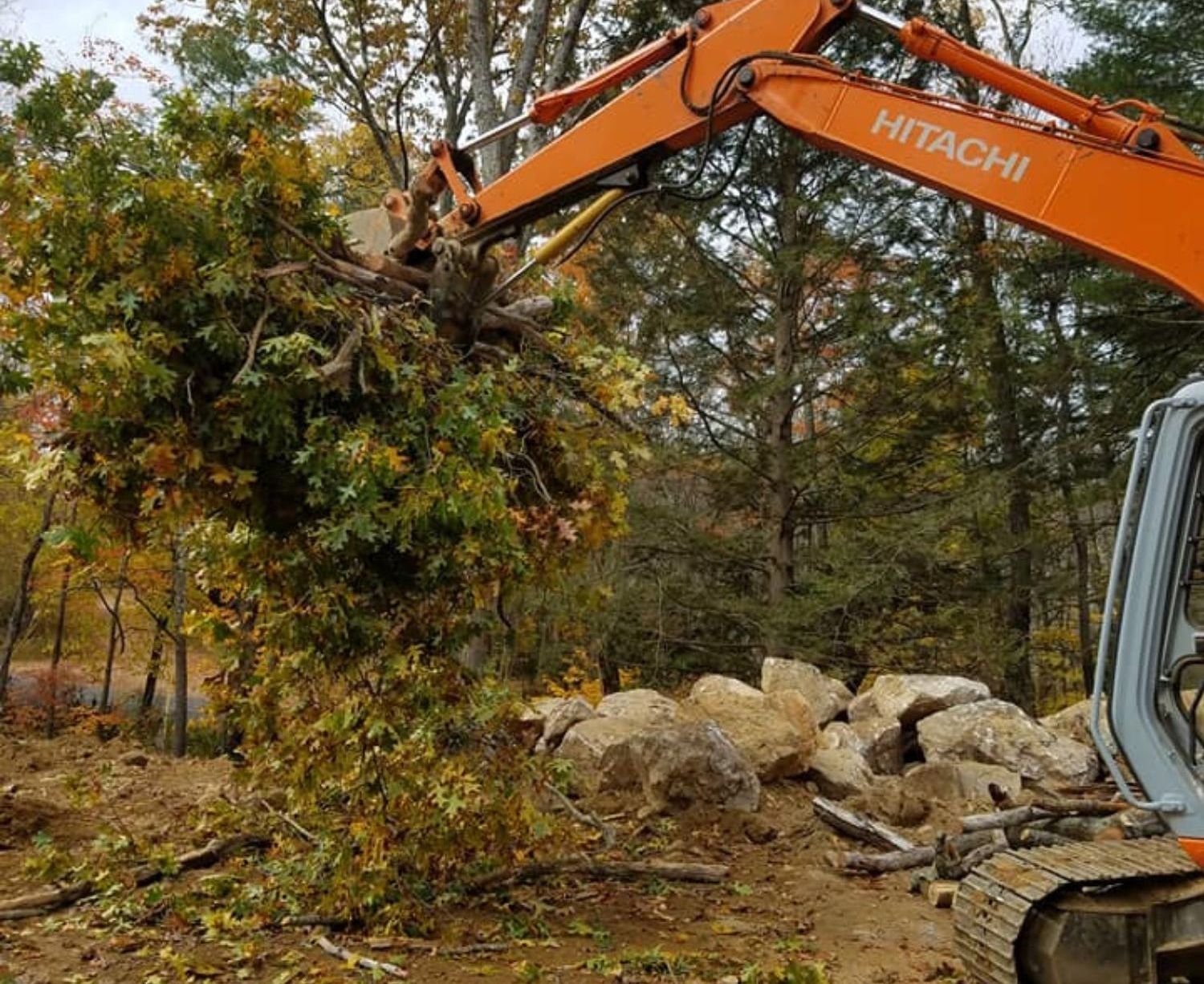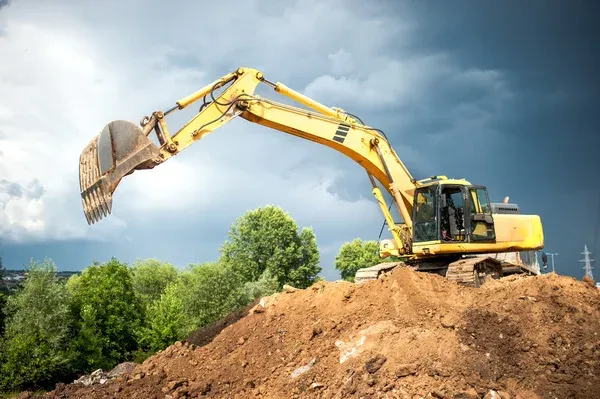Land Clearing Techniques for Massachusetts Properties: A Comprehensive Guide
Site Preparation for Proper Development

Land clearing is a crucial step in preparing a site for development, construction, or landscaping projects in Massachusetts. Whether clearing wooded areas, overgrown vegetation, or debris-strewn lots, employing the right land clearing techniques is essential for maximizing efficiency, minimizing environmental impact, and ensuring compliance with local regulations. In this comprehensive guide, we'll explore various land clearing techniques tailored specifically for Massachusetts properties, addressing common challenges and considerations to help property owners and developers make informed decisions.
Understanding Land Clearing
Land clearing involves the removal of trees, shrubs, rocks, debris, and other obstacles to create a cleared and level surface for subsequent use. This process may include vegetation removal, tree felling, stump removal, grading, and debris disposal, depending on the scope and requirements of the project. Effective land clearing requires careful planning, proper equipment, skilled operators, and adherence to safety and environmental protocols.
Land Clearing Techniques:
1. Manual Clearing: Manual clearing involves hand tools such as chainsaws, axes, and machetes to remove small trees, brush, and vegetation. This technique is suitable for small-scale projects, sensitive areas, or sites with limited accessibility where heavy machinery cannot operate safely.
2. Mechanical Clearing: Mechanical clearing utilizes heavy machinery such as bulldozers, excavators, forestry mulchers, and brush cutters to clear vegetation and debris quickly and efficiently. This technique is ideal for large-scale land clearing projects, such as commercial development, road construction, or utility line installation.
3. Forestry Mulching: Forestry mulching is a specialized land clearing technique that uses a mulching attachment mounted on an excavator or skid steer to grind vegetation, trees, and brush into mulch. This method is environmentally friendly, as it reduces soil erosion, minimizes disturbance to the ground, and leaves behind nutrient-rich mulch that can benefit soil health.
4. Controlled Burning: Controlled burning, also known as prescribed burning, involves the deliberate ignition of vegetation under controlled conditions to remove brush, weeds, and debris. This technique is commonly used for land management, wildfire prevention, and ecological restoration projects but requires careful planning, permits, and adherence to safety guidelines.
5. Chemical Clearing: Chemical clearing involves the application of herbicides or vegetation management products to target and kill unwanted vegetation over time. This method is often used in conjunction with mechanical clearing to control regrowth and invasive species effectively.
Considerations for Land Clearing in Massachusetts:
1. Environmental Regulations: Massachusetts has strict environmental regulations governing land clearing activities to protect sensitive habitats, wetlands, water resources, and endangered species. Property owners and developers must obtain necessary permits and approvals from state and local authorities before initiating land clearing projects.
2. Soil Erosion Control: Soil erosion can occur during land clearing activities, leading to sedimentation in waterways and pollution of aquatic habitats. Implementing erosion control measures such as silt fences, sediment basins, and erosion control blankets is essential to prevent soil erosion and minimize environmental impact.
3. Habitat Protection: Land clearing can disrupt natural habitats and wildlife populations, particularly in ecologically sensitive areas. Consideration should be given to habitat protection measures, such as wildlife corridors, buffer zones, and nesting surveys, to mitigate the impact of land clearing on local ecosystems.
4. Site Preparation: Proper site preparation is essential for successful land clearing projects. This includes surveying, marking property boundaries, identifying utilities, and developing a site plan that outlines the extent of clearing, grading, and erosion control measures required.
5. Waste Disposal: Disposal of cleared vegetation, trees, and debris must be handled responsibly to comply with waste management regulations in Massachusetts. Options for waste disposal may include recycling, composting, chipping, or transporting debris to licensed landfills or recycling facilities.
How do environmental regulations impact land clearing activities in Massachusetts?
Environmental regulations play a significant role in governing land clearing activities in Massachusetts, aiming to protect natural resources, wildlife habitats, and water quality while promoting sustainable development. These regulations are established at the federal, state, and local levels and require property owners to comply with specific guidelines and obtain necessary permits before conducting land clearing activities. In Massachusetts, the Massachusetts Environmental Policy Act (MEPA) requires state agencies and certain private entities to assess the environmental impacts of proposed projects, including land clearing, through an Environmental Impact Review (EIR) or Environmental Notification Form (ENF). This review process evaluates potential effects on wildlife, wetlands, water resources, air quality, and historic or cultural resources.
Additionally, the Wetlands Protection Act (WPA) and the Rivers Protection Act (RPA) regulate activities that may impact wetlands, waterways, and riverfront areas. Land clearing near wetlands or rivers may require permits from the Massachusetts Department of Environmental Protection (MassDEP) or local conservation commissions to ensure compliance with wetland protection regulations.Furthermore, the Massachusetts Endangered Species Act (MESA) safeguards rare and endangered species and their habitats. Property owners must conduct habitat assessments and obtain permits from the Massachusetts Division of Fisheries and Wildlife (MassWildlife) if endangered species are present on the property or if habitat alterations are proposed.
Local zoning bylaws and ordinances may impose additional restrictions on land clearing activities, such as setback requirements, tree preservation regulations, and erosion control measures. Municipal conservation commissions and planning boards oversee compliance with these local regulations and may require permits or approvals before initiating land clearing projects.
Regulations As A Balance to Development And Conservation Interests
Overall, environmental regulations in Massachusetts aim to balance development and conservation interests, ensuring that land clearing activities are conducted responsibly to minimize adverse impacts on the environment and maintain the ecological integrity of the state's natural resources. Compliance with these regulations is essential for property owners to avoid legal penalties, project delays, and negative environmental consequences.
Land clearing is a necessary and often challenging aspect of property development, construction, and landscaping projects in Massachusetts. By employing the right land clearing techniques and adhering to environmental regulations and best practices, property owners and developers can achieve their project goals while minimizing environmental impact and ensuring compliance with local regulations. Whether using manual clearing methods, mechanical equipment, or specialized techniques like forestry mulching or controlled burning, careful planning, and execution are essential for successful land clearing projects in Massachusetts.
Book a Service Today
We will get back to you as soon as possible
Please try again later
Quick & Reliable
Prompt, Dependable, Prepared – Anytime, Any Service!
Location
Call
All Rights Reserved | Groundscapes Inc. | Website Managed by Leads By Vinny



